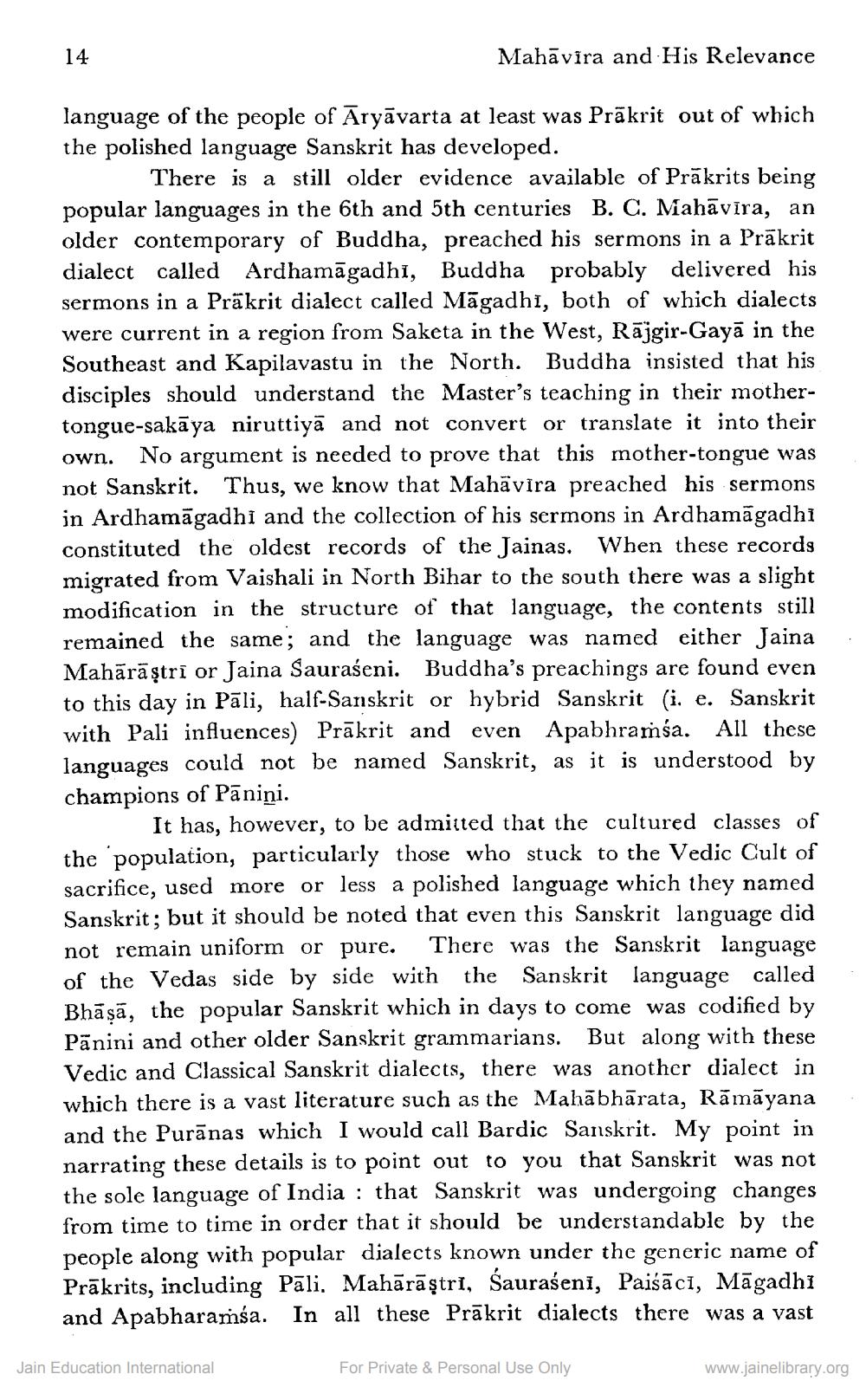________________
Mahāvīra and His Relevance
language of the people of Āryāvarta at least was Prākrit out of which the polished language Sanskrit has developed.
There is a still older evidence available of Prākrits being popular languages in the 6th and 5th centuries B. C. Mahāvīra, an older contemporary of Buddha, preached his sermons in a Prākrit dialect called Ardhamāgadhi, Buddha probably delivered his sermons in a Prākrit dialect called Māgadhi, both of which dialects were current in a region from Saketa in the West, Rājgir-Gayā in the Southeast and Kapilavastu in the North. Buddha insisted that his disciples should understand the Master's teaching in their mothertongue-sakāya niruttiyā and not convert or translate it into their own. No argument is needed to prove that this mother-tongue was not Sanskrit. Thus, we know that Mahavira preached his sermons in Ardhamāgadhi and the collection of his sermons in Ardhamāgadhi constituted the oldest records of the Jainas. When these records migrated from Vaishali in North Bihar to the south there was a slight modification in the structure of that language, the contents still remained the same; and the language was named either Jaina Mahārāştri or Jaina Sauraseni. Buddha's preachings are found even to this day in Pāli, half-Sanskrit or hybrid Sanskrit (i. e. Sanskrit with Pali influences) Prākrit and even Apabhramba. All these languages could not be named Sanskrit, as it is understood by champions of Pāniņi.
It has, however, to be admitted that the cultured classes of the population, particularly those who stuck to the Vedic Cult of sacrifice, used more or less a polished language which they named Sanskrit; but it should be noted that even this Sanskrit language did not remain uniform or pure. There was the Sanskrit language of the Vedas side by side with the Sanskrit language called Bhāṣā, the popular Sanskrit which in days to come was codified by Pānini and other older Sanskrit grammarians. But along with these Vedic and Classical Sanskrit dialects, there was another dialect in which there is a vast literature such as the Mahābhārata, Rāmāyana and the Purānas which I would call Bardic Sanskrit. My point in narrating these details is to point out to you that Sanskrit was not the sole language of India : that Sanskrit was undergoing changes from time to time in order that it should be understandable by the people along with popular dialects known under the generic name of Prākrits, including Pāli. Mahārāştri, Śaurašeni, Paiśācī, Māgadhi and Apabharamsa. In all these Prākrit dialects there was a vast
Jain Education International
For Private & Personal Use Only
www.jainelibrary.org




